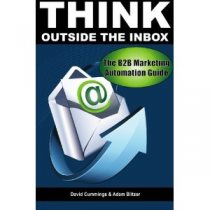October 29, 2007 by Adam Blitzer
B2B marketers who have budget surpluses, more than enough staff to accomplish all of your objectives, and work from 10-4, please raise your hands. Why don’t I see anyone with her hand up? Yep, you guessed it, B2B marketers are chronically overworked and understaffed. What’s worse is that most organizations require the marketing department to spend significant time and resources on items that will not necessarily increase lead generation effectiveness or return on marketing investment, the two most import key performance indicators for a b2b marketing program.
Brian Carroll, author of Lead Generation for the Complex Sale, states that B2B marketers spend too much time on non-revenue-driving activities. He cites a post from Michael Webb of Six Sigma selling who lists the following tasks that take up valuable time and resources from already understaffed marketing departments:
- Time spent on administration, reporting, and menial tasks (leaving little time for customers)
- Trade shows and events that generate boxes of “leads” not worth calling on
- Marketing literature that no one reads
- Wasting time with the wrong prospects
Each of these tasks can be made more efficient or alleviated altogether through technology. Marketing automation solutions provide advanced micro-level analytics and automation allowing marketers to focus their efforts on their most promising leads and marketing vehicles.
Less time spent on reporting — by consolidating all marketing vehicles into one interface, slicing and dicing data should be a lot easier than when using disparate tools
Automated nurturing for “boxes of trade show leads” — let the software do the work by nurturing these “suspects.” The ones who respond will be flagged by your system and the ones who don’t… well… they were probably interested in your free iPod.
Marketing literature that no one reads — micro -level web analytics shows you exactly which white papers your promising prospects are downloading and reading. Use what you have learned from your first few papers to tailor any future collateral.
Wasting time with the wrong prospects — automatically scoring and/or grading prospects will show your sales teams exactly where to spend their time. Scores are typically based on implicit factors (online behavior — clicks, page views, etc.) and grades are based on how well the prospect fits your ideal customer profile (industry, job title, etc.). Combining these two factors gives your reps a very objective way to prioritize their time.
There are a number of good solutions available and they are starting to generate some press. It is only a matter of time before these tools are mainstream. In the mean time, marketers who take advantage of marketing automation will reap the benefits of streamlined marketing and sales processes.



